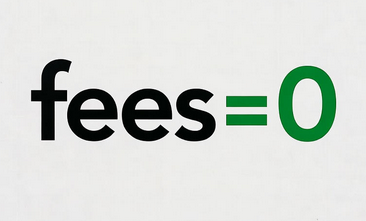Increasing Survivability of the Battalion Command Post against Artillery Fire Using Antenna Extension
DOI:
https://doi.org/10.3849/aimt.01731Keywords:
artillery fire, command post, deception, survivabilityAbstract
The command post is a key element of the troop assembly that must be concealed and protected from the enemy. This paper examines the possible increase in survivability of a battalion command post from the effects of enemy artillery fire by deception prior to electronic signature detection by extending the antenna of radio communication assets. Using modelling, the areas of possible command post locations, the exact command post positions and the areas of artillery fire were marked in a geoprocessing tool. Statistical methods were then used to evaluate the success rate of command post destruction. Since there are no documents available that address this issue, the results of this research will allow an assessment of the effectiveness of this measure.
References
DALZELL, S., C.M. SCHNAUBELT, M.E. LINICK, T.R. GULDEN, L.P. CO-LABELLA, S.G. STRAUS, J. SLADDEN, R. JENSEN, M. OLSON, A.G. DONOHUE, J.L. HASTINGS, H.A. REININGER and P. SPEED. Main Command Post-Operational Detachments (MCP-ODs) and Division Headquarters Readiness. Santa Monica: RAND Corporation, 2019. ISBN 978-1-9774-0225-7.
STEW, M. Army Looks to Disperse Command Posts to Boost Survivability [online]. National Defence Industrial Association, 2020 [viewed 2021-12-11]. Available from: https://www.nationaldefensemagazine.org/articles/2020/10/22/army-looks-to-disperse-command-posts-to-boost-survivability
Multispectral Masking Covers [online]. 2021 [viewed 2021-12-11]. Available from: http://www.bois-filtry.cz/multispektralni-maskovaci-pokryvy.php
SEDLÁČEK, M. and F. DOHNAL. Possibilities of Using Geographic Products in Tasks of Military Engineering. Challenges to National Defence in Contemporary Geopolitical Situation, 2020, 2020(1), pp. 145-155. DOI 10.47459/cndcgs.2020.18.
ČERNÝ, J. Modular Structure of Command and Control for Operations Genera-tion. Economics and Management, 2012, 2012(2), pp. 114-122. ISSN 1802-3975.
GREENBERG, M. It’s Time to Fix the Command Post: Optimizing Headquarters’ Mobility, Survivability, and Interoperability for the Future Fight [online]. 2020 [viewed 2021-12-12]. Available from: https://mwi.usma.edu/its-time-to-fix-the-command-post-optimizing-headquarters-mobility-survivability-and-interoperability-for-the-future-fight/
HORTON, J. and T. THOMAS. Adapt or Die: Command Posts - Surviving the Future Fight [online]. 2020 [viewed 2021-12-13]. Available from: https://www.army.mil/article/235968/adapt_or_die_command_posts_surviving_the_future_fight
HEININGER, C. Army Designing Next-gen Command Posts [online]. 2016 [viewed 2021-12-13]. Available from: https://www.army.mil/article/167807/army_designing_next_gen_command_posts
KELLER, J. Army Seeks to Reduce the Electronic Signatures of Command Posts to Enhance Concealment from the Enemy [online]. 2020 [viewed 2021-12-13]. Available from: https://www.militaryaerospace.com/rf-analog/article/14182899/electronic-signatures-command-posts-concealment
KIM, K. and Y. PARK. Development of Design Considerations as a Sustainability Approach for Military Protective Structures: A Case Study of Artillery Fighting Position in South Korea. Sustainability, 2020, 12(16), 6479. DOI 10.3390/su12166479.
Field Artillery Cannon Battalion [online]. 2015 [viewed 2021-12-01]. Available from:
https://armypubs.army.mil/epubs/DR_pubs/DR_a/pdf/web/atp3_09x23.pdf
Tactics, Techniques, and Procedures for the Targeting Process [online]. 1996 [viewed 2021-11-11]. Available from: https://www.globalsecurity.org/intell/library/policy/army/fm/6-20-10/
Tactics, Techniques, and Procedures for Field Artillery Manual Canon Gunnery [online]. 1999 [viewed 2021-11-18]. Available from: https://ebin.pub/qdownload/fm-6-40-mcwp-3-1619-tactics-techniques-and-procedures-for-field-artillery-manual-cannon-gunnery.html
ZEZULOVÁ, E., K. HASILOVÁ, T. KOMÁRKOVÁ, P. STONIŠ, J. ŠTOLLER and O. ANTON. NDT Methods Suitable for Evaluation the Condition of Military Fortification Construction in the Field. Applied Sciences, 2020, 10(22), 8161. DOI 10.3390/app10228161.
ŠTOLLER J. and P. DVOŘÁK. Field Tests of Cementitious Composites Suitable for Protective Structures and Critical Infrastructure. Key Engineering Materials, 2016, 722, pp. 3-11. DOI 10.4028/www.scientific.net/KEM.722.3.
ŠTOLLER J. and P. DVOŘÁK. Reinforced Concrete Frames under Distant Blast. Key Engineering Materials, 2017, 755, pp. 229-235. DOI 10.4028/www.scientific.net/KEM.755.229.
MAŇAS P., K. CIBULOVÁ and J. ŠAFRANKO. Protection of the Critical Infra-structure Areas – Remarks and Ideas, In: 2021 International Conference on Military Technologies (ICMT). Brno: IEEE, 2021. DOI 10.1109/ICMT52455.2021.9502742.
ALOGLA A., M. HELAL, M.M. ELSHAFEY and E. FATHALLAH. Numerical Analysis for Critical Structures Protection against Blast Loading Using Metallic Panels. Applied Sciences, 2020, 10(6), 2121. DOI 10.3390/app10062121.
McCULLOCH P. and J.A. NELDER. Generalized Linear Models. 2nd ed. London: Chapman and Hall, 1989. ISBN 0-412-31760-5.
Downloads
Published
License
Copyright (c) 2023 Advances in Military Technology

This work is licensed under a Creative Commons Attribution-NonCommercial 4.0 International License.
Authors who publish with this journal agree to the following terms:
1. Authors retain copyright and grant the journal right of first publication with the work simultaneously licensed under a Creative Commons Attribution License that allows others to share the work with an acknowledgement of the work's authorship and initial publication in this journal.
2. Authors are able to enter into separate, additional contractual arrangements for the non-exclusive distribution of the journal's published version of the work (e.g., post it to an institutional repository or publish it in a book), with an acknowledgement of its initial publication in this journal.
3. Authors are permitted and encouraged to post their work online (e.g., in institutional repositories or on their website) prior to and during the submission process, as it can lead to productive exchanges, as well as earlier and greater citation of published work.
Users can use, reuse and build upon the material published in the journal for any purpose, even commercially.






